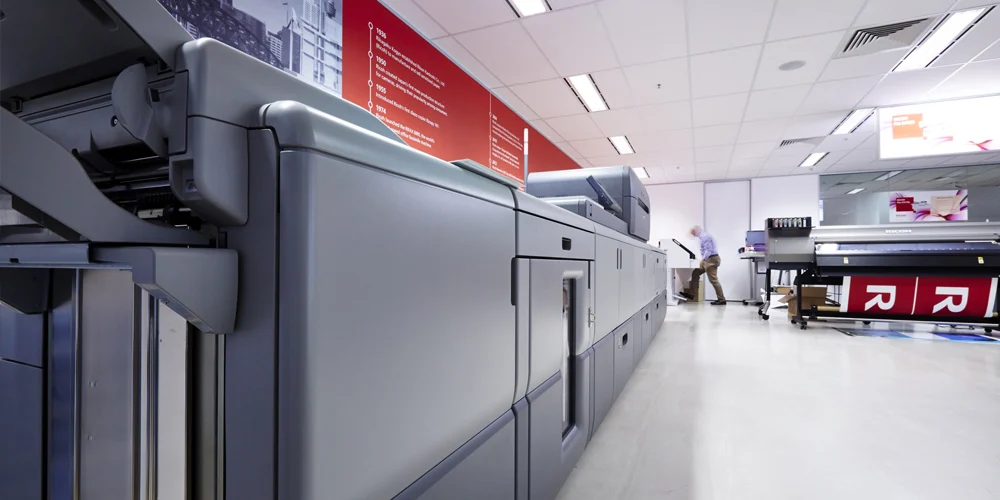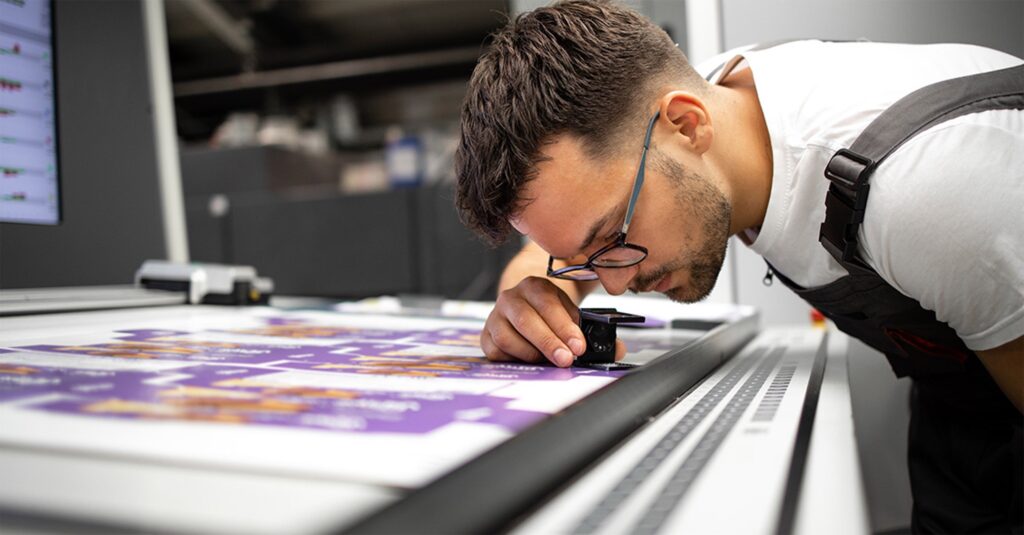
For businesses, investing in a digital sheet-fed printing press can dramatically increase printing efficiency, quality, and flexibility. But while many companies understand the upfront cost, fewer know the ongoing operational costs involved.
This guide breaks down what it costs to operate a digital sheet-fed press in 2025, helping business owners make informed decisions for their printing needs.
What Is a Digital Sheet-Fed Printing Press?
A digital sheet-fed press is a high-speed, high-quality printer designed to handle individual sheets of paper (as opposed to continuous rolls) for commercial or in-house production. These presses are commonly used for:
- Marketing materials (brochures, flyers, postcards)
- Professional documents (reports, booklets)
- Short-run production jobs requiring quick turnaround
- Specialty media printing, such as cardstock or envelopes
Unlike traditional offset presses, digital sheet-fed presses do not require printing plates, making setup faster, reducing waste, and allowing variable data printing.
Factors That Affect Operating Costs
The cost to operate a digital sheet-fed press depends on multiple variables:
1. Volume of Printing
- Higher print volumes reduce the cost per page, but total costs rise with more output.
- Low-volume operations may pay more per sheet but save on setup and maintenance.
2. Toner or Ink Costs
- Digital presses use specialized toner or liquid ink.
- Costs vary depending on color coverage, page size, and media type.
- High-quality color prints or specialty paper increase per-page costs.
3. Paper and Media
- Sheet-fed presses can handle standard office paper, cardstock, or specialty media.
- Paper quality, size, and weight significantly impact cost.
4. Electricity and Power Usage
- Presses consume electricity, with larger devices drawing more power.
- Operational costs can fluctuate depending on usage patterns and local energy rates in the NY metro area.
5. Maintenance and Consumables
- Regular maintenance, replacement parts, and cleaning solutions are required to keep the press running efficiently.
- Manufacturer service contracts or third-party maintenance can help manage costs predictably.
6. Labor Costs
- Skilled operators are often needed to run, monitor, and troubleshoot digital presses.
- Labor costs can vary depending on office size and workflow complexity.
Typical Cost Breakdown
Here’s an example of operating costs for a mid-sized digital sheet-fed press (approximate values for 2025):
| Cost Component | Estimated Range per 1,000 Sheets |
| Toner / Ink | $40–$120 (color coverage dependent) |
| Paper / Media | $20–$100 (standard vs. specialty stock) |
| Electricity | $5–$15 |
| Maintenance / Parts | $10–$30 |
| Labor | $50–$100 |
| Total Operating Cost | $125–$365 per 1,000 sheets |
Note: Costs vary widely based on manufacturer (Canon, Ricoh, Xerox, etc.), press model, and local labor rates.
Cost Per Page vs. Total Cost
While the total operating cost provides a big-picture estimate, many businesses focus on cost per page to assess profitability:
- Black-and-white standard sheets: $0.10–$0.20 per page
- Full-color standard sheets: $0.25–$0.50 per page
- Specialty media: $0.50–$1.00+ per page
High-volume production jobs reduce the per-page cost due to efficiencies in toner use, media handling, and labor.
Ways to Reduce Operating Costs
1. Use High-Yield Consumables
- Larger toner cartridges or bulk ink reduce cost per page.
2. Optimize Print Settings
- Adjust color coverage, resolution, and duplex printing for efficiency.
3. Regular Maintenance
- Preventative maintenance keeps the press running efficiently and reduces unexpected downtime.
4. Choose the Right Paper
- Standardized media reduces jams and waste, lowering overall operational expenses.
5. Track Usage
- Monitor print jobs to identify inefficiencies and allocate resources effectively.
6. Consider Managed Print Services (MPS)
- MPS providers can handle maintenance, supply delivery, and usage monitoring for a predictable monthly cost, often lowering overall expenses.
Comparing Digital Sheet-Fed Presses to Other Options
| Printer Type | Best For | Operating Cost |
| Desktop MFP | Small businesses, low-volume printing | $0.05–$0.25 per page |
| Office Laser / Color Laser | Medium-volume, office documents | $0.10–$0.35 per page |
| Production Printer (Sheet-Fed) | High-volume, professional-quality print | $0.10–$0.50 per page |
| Offset Press | Very large runs, commercial printing | $0.05–$0.20 per page but high setup costs |
Tip: For businesses producing 1,000–5,000 sheets per week, digital sheet-fed presses offer a balance between quality, speed, and operational cost.
Additional Considerations
- Speed vs. Cost: Faster presses may use more energy or higher-yield toner. Evaluate whether speed is essential for your business.
- Color Coverage: Pages with heavy graphics or photos use more toner, increasing costs.
- Paper Waste: Misfeeds or test prints contribute to costs, regular training and quality checks help minimize this.
- Service Contracts: Local service agreements reduce downtime and stabilize costs.
Operating a digital sheet-fed printing press involves more than just the upfront purchase. Businesses must consider toner, paper, labor, electricity, maintenance, and workflow efficiency to calculate the true cost per sheet. A digital sheet-fed press can be a cost-effective solution for high-quality, high-volume printing—but understanding operational costs is key to maximizing ROI.
With proper planning, regular maintenance, and workflow optimization, these presses can deliver professional results quickly and efficiently, helping your business stay competitive and productive.
Emerald Document Imaging helps businesses choose, install, and manage digital sheet-fed presses. We provide cost analysis, workflow optimization, and ongoing support to ensure your press operates efficiently.
Contact us today for a free consultation and operational cost assessment →



